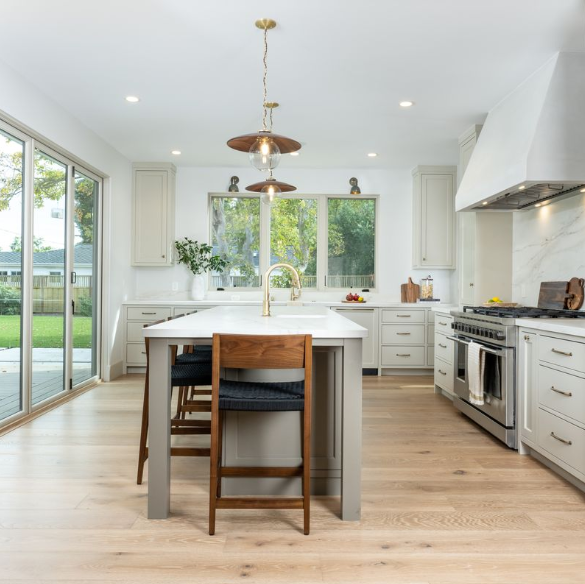Wood is one of the most beautiful and versatile materials. It’s what drew me to selling and guiding buyers on the material! Wood is full of unique grain patters and character. But, like all natural materials, wood undergoes an aging process over time.

This aging process can look different between different species of wood, but all will experience change over time. In this post, we will explore what happens during the natural aging process and how you can embrace those changes in your home!
What Causes Wood to Age?

The aging process of wood is influenced by several factors, including exposure to light, temperature fluctuations, humidity and natural oxidation.
UV Light Exposure:
UV Rays from sunlight can cause hardwood floors to darken or change color over time. This can be more noticeable in woods like cherry, mahogany and walnut, which tend to deepen in color with prolonged exposure to light.
Oxidation
As wood is exposed to air, a slow chemical reaction occurs, leading to a change in color and texture. This process can result in a more rustic or weathered appearance over time.
Humidity and Moisture
Wood absorbs and releases moisture depending on the surrounding environment. Changes in humidity can cause wood to expand, contract, or develop a patina, which adds to its aged look.
Temperature Fluctuations
Extreme temperatures or temperature changes can cause wood to warm, crack, or become more brittle, leading to a weathered appearance. There are ways to counteract this but it’s not always avoidable!

Embracing the Aging Process
Though this can all seem a bit scary to homeowners, it’s all part of the natural process that wood goes through and can add character and charm to a space. An advisor can help guide you through what to expect!

